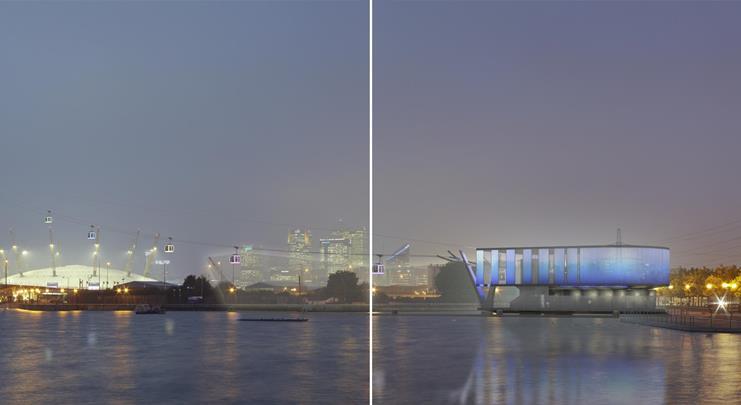CABE is the UK government’s advisor on architecture, urban design and public space. And they’ve just now released their opinion on the London Thames Cable Car.
Generally-speaking, CABE is quite positive on the project. They “welcome” the project and are utterly effusive when it comes to the tower design:
- “The selection of a cable car over a bridge or a tunnel seems to be a realistic decision, given the time constraints and impact on the surrounding area.”
- “The towers . . . are well considered and could make an iconic contribution to this stretch of the river Thames . . . (they) are an exciting addition to the river.”
CABE is less excited when it comes to the station architecture. CABE calls the stations “modest structures” which aren’t as “inspiring as the towers.” There is also concern that because the “trip may become very popular” stations should be able to accommodate “large numbers of visitors in their passage into and through the station.” This concern is made more pronounced when CABE states the system will need to “cope with large surges of travellers generated from O2 concerts or Excel event.”
This surge problem is a legitimate one, but no more so than with any other technology. All modes of transit suffer in surge conditions. However, CABE’s comments do lead me to ask why the system is only being designed to offer capacity of 2,500 persons per hour per direction (PPHPD)?
Increasing capacity to 4,000 would be only marginally more expensive and wouldn’t require any major technology changes. That, of course, assumes MDG technology, rather than the more robust 3S. Were system designers to opt for 3S technology, stations would necessarily increase in size (thereby alleviating some of CABE’s concerns), while providing up to 8,000 pphpd. Using the 3S would also eliminate most stoppages due to inclement weather.
It seems bizarre that a system designed conceived because of the upcoming summer Olympics should opt for such a low capacity system. After all, the Rheinseilbahn in Koblenz is built for 3,700 pphpd – and that’s just to transport a couple of million Germans during a flower show over a period of 3-4 months.
For more, read Building Design Online and Greenwich.co.uk.

